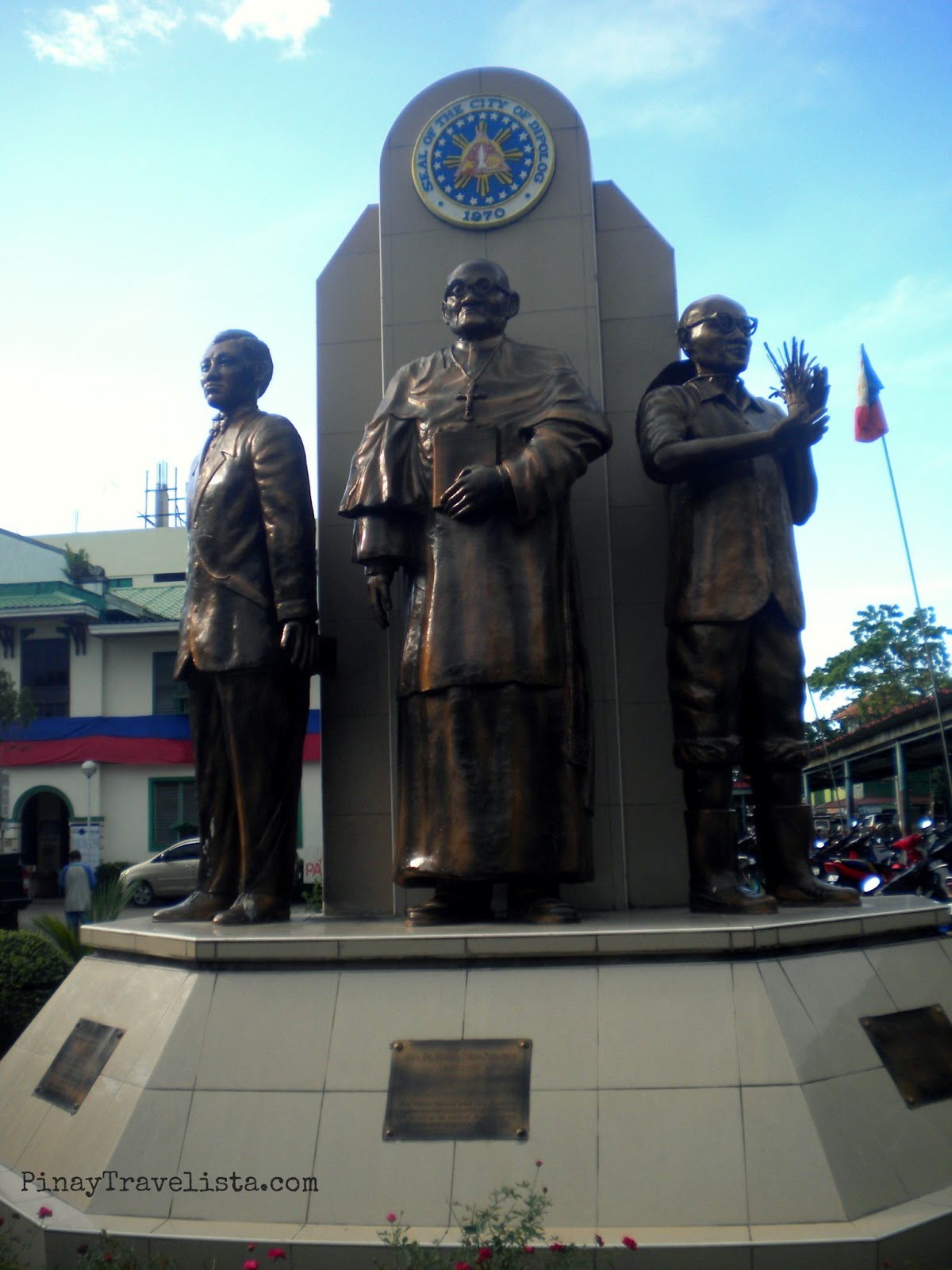Standing in front of the City Hall, the three prominent figures of seemingly men of different stature, and professions in life stands in the busy city street corner. Meet the first municipal mayor of Dipolog, first Filipino Diocesan Priest in Mindanao, and the farmer who introduce a rice planting system that paved the agricultural system of the country today.
- Hon. Pascual T. Martinez was appointed by Gen. John J. Pershing, Governor of the Department of Mindanao as the First Municipal Mayor of Dipolog City. He was later elected Municipal Mayor in 1918 following the First General Election of Dipolog and served until 1921.
- Rev. Fr. Nicasio Y. Patagan was the First Filipino Diocesan Priest of Mindanao. Appointed Parish Priest of Dipolog in May 1940 and served the office until 1967.
- Eugenio Magarte was a farmer for 25 years who introduced the Margate System of Planting Rice, authored the book “Humay”, 100 Kabanes Matag Hektarya.” And was declared by Free Press as “Man of the Year” in 1954, and served as Technical Assistant in the field of Agriculture during the Administration of Presidents Ramon Magsaysay and Carlos P. Garcia.
Pagsalabuk Center / Rotonda
An abstract, and classical design that now interprets Dipolog City today is the statue that represents the Tri-people of Mindanao — Muslims, Christians, and Subanen, stands at a rotonda where the busy pedestrians and motorists passes by. It was said that the people of Dipolog, like this city is diverse, yet united in it’s vision, and goals. It seeks peace, progress, and just, and human society for it’s local citizens. The figure stands 4.50 meters in height and is not made of bronze or brass as you may think it is at first sight. It is however, made of resin that is both durable, and light, and would cost less than any bronze or brass would.
Besides the influence of Philippine’s National Hero, Dr. Jose Rizal on Dipolog, seen mostly on it’s architectural designs, these men whose presence has greatly added to the rich history of this city, and the modern interpretation of the people of Dipolog now stands in the streets of this interesting city. Dipolog never ran out of something to keep any visitor entertained.
TRAVEL NOTES
+ The Three Prominent Pioneer’s Statue can be visited when you visit the Cathedral of Our Lady of the Holy Rosary, and after the walking tour, you can also take a break from all the heat, and get yourselves some refreshments at Julie’s.
+ This Pagsalabuk Circle is best seen both during daylight and at night. I like it more during nighttime when the lights play on it’s surfaces. But it is also beautiful in daylight, where you can see the details of the sculpture.
HOW TO GET THERE DETAILS:
Dipolog’s Three Prominent Pioneers StatueRizal Ave. Cor. Herrera St., Dipolog City
Coordinates: 8.586368,123.344547
Map Location: HERE
Pagsalabuk Center / Rotonda
Estaka – Turno Road Junction, Dipolog City
Coordinates: 8.583695,123.350523
Map Location: HERE
You might like to read the rest of the Dipolog Series posts:
Julie’s Halo – Halo & Refreshments
Some Solid, Hard, Unmoving Sculpted Men
